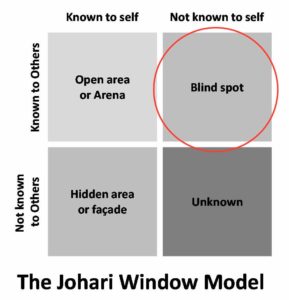The Most Effective Management Tool: Feedback
I always know when it is time to convene a feedback session among my direct reports: people are coming into my office expressing concerns about other team members and asking me to get involved.
My attitude in such cases has always been: these are adults, and they are able to take care of these issues on their own. If they’re not taking care of these issues on their own, my job as a leader is not to intervene and do it for them. It is to support them in resolving the matter amongst themselves, by giving and receiving feedback.
This is not to say that I throw everyone together and have them vent to one another. There is an art to soliciting and offering feedback. It is actually very simple, with guidelines that are important to follow, particularly in a professional environment. In this article, we will impart these guidelines, as they worked at Fox for 15 years, and more recently through Hallett Leadership’s Accelerated Leadership Program.
But before we describe how to facilitate a feedback session, it is worth discussing that part of a person’s psyche at the heart of the feedback process: The Blind Spot.
The Blind Spot
The map below is called the Johari Window. It is a simple and elegant tool that enables us to understand four different ways we can be perceived. The Johari Window and it’s uses will be the subject of another article. For our purposes here, take note of the quadrant in the upper right – the Blind Spot.

The Blind Spot contains those belief structures, behaviors, and biases that are operating in our subconscious that we ourselves cannot see, but that those around us can.
Feedback can reveal to our conscious awareness what others are seeing about us, that we until the present moment have not noticed. In other words, feedback enables us to bring information out of our blind spots, into an area of perception where we and other people can see.
It is important to note that we can be blind to both positive and negative beliefs, behaviors, and biases, and corresponding feedback can be constructive in all cases.
Why does this matter? Because when others help us perceive things about ourselves or our behavior that we have been blind to, we have an opportunity to take constructive action on this new information and grow as leaders.
The Discomfort Of Giving & Receiving Feedback
Giving and receiving feedback can be a tremendous catalyst for real growth, but it can also be uncomfortable. Everyone is wired differently, though there is always some level of vulnerability involved in the process of giving and receiving feedback.
For some people, looking a person in the eye and delivering honest feedback is much more uncomfortable than receiving feedback. Others are more comfortable calling out others’ room for improvement, but may feel defensive at being confronted with their own.
Remember – when you are receiving feedback from someone, whether it is a co-worker, a neighbor, even your spouse, the content of what they say is not necessarily true. The feedback they are offering may be colored by their own biases and perspectives. Instead of considering feedback as a definitive reflection on your character or being, think of it as a reflection of what you are putting out there into the universe for other people to see.
Equipped with the understanding of how others are perceiving you, it is possible to take action on the information to modify your behavior or attitude and take an active role in shaping others’ perception of you.
If giving honest feedback to someone may feel unkind, know that there is a cost in allowing a valued team or community member to retain a blind spot – because then they are being robbed of an opportunity to grow in awareness, and improve.
Now that we understand what a blind spot is, and that opening ourselves to feedback enables us to shift it into our conscious perception – how can we create a safe environment for feedback?
Create The Right Environment
A leader’s first step toward facilitating an effective feedback session is to establish the right environment.
Typically, I call an impromptu staff meeting. Once everyone is seated, I tell them:
“Okay, everyone, we’re going to have some interaction.”
I usually try to keep it pretty benign in terms of structure, because the last thing you want is to put people on defense. The key is creating an environment of mutual trust and respect, with full honesty.
For example, I might write two statements on the board:
What I admire about you as a manager is…
What would make you an even better manager is…
Then I would have them mingle with each other one-on-one around the room and exchange these two feedback sentences with each other.
Some folks might need some gentle encouragement to stand firm and engage with the exercise, but once they get going, the room always becomes quite animated and lively. Usually, any defensiveness or tension airs out. Once they complete the exercise with their first partner, I ask them to find someone else and exchange feedback again.
Here is an example of how one of these feedback exchanges might go: Mike and Sally partner up with each other.
Mike: What I admire about you as a manager, Sally, is that you’re compassionate. You’re sensitive. You really care about your team and instill tremendous loyalty in them.
Then it’s time for the second statement.
Mike: What would make you an even better manager is to take a firmer stand on some of the issues I know you feel strongly about. People look up to you and respect your point of view. If you were more vocal it would engage the team more effectively.
After Mike completes his statements, Sally’s only response is “Thank you.” It is important to just listen and take in the feedback, not to get defensive and try to explain anything.
Then Sally has her turn:
Sally: What I admire about you as a manager, Mike, is that you’re incredibly organized. You give your team a great framework and great background on each project they’re working on. You do an amazing job at setting them up for success.
And then Sally completes her second statement.
Sally: What would make you an even better manager, Mike, is to provide your team members an opportunity to free-form, so they can develop their own innovative skills at addressing a problem.
When I convene a feedback session like this one, people often feel tense before we begin. However, when it’s over, I mostly hear: “I’m so glad we did that.” And not coincidentally, once we complete the session, the flow of complaining managers into my office suddenly dies down.
Conclusion
Today, we explored our Blind Spot, and the enormous advantage of surfacing its contents. We learned this is the first step toward being able to do something about it. Being able to act on it. The byproduct of this process is self-discovery and growth.
We discussed steps you can take to facilitate an effective feedback session.
- Schedule a meeting with the necessary parties.
- Establish a safe environment for the feedback session by laying out the terms and boundaries of the session – what it is, and what it isn’t.
- Write the two statements on the board: “What I admire about you as a manager is…,” and “What would make you an even better manager is….”
- Invite them to mingle and exchange the statements with each other according to the example of Mike and Sally above.
- Inform them that at the end of receiving feedback, their only response is “Thank you.”
Lastly, we’ve examined how giving and receiving feedback may be uncomfortable, but the front-end discomfort is much less costly and painful than the back-end consequences of withholding the feedback.
If you are not providing feedback to your colleagues, you’re likely inhibiting their growth.
If you aren’t receptive to feedback from your colleagues, you are slowing your own growth and advancement. So start a new trajectory of growth for you and your colleagues today.
Best of luck!





